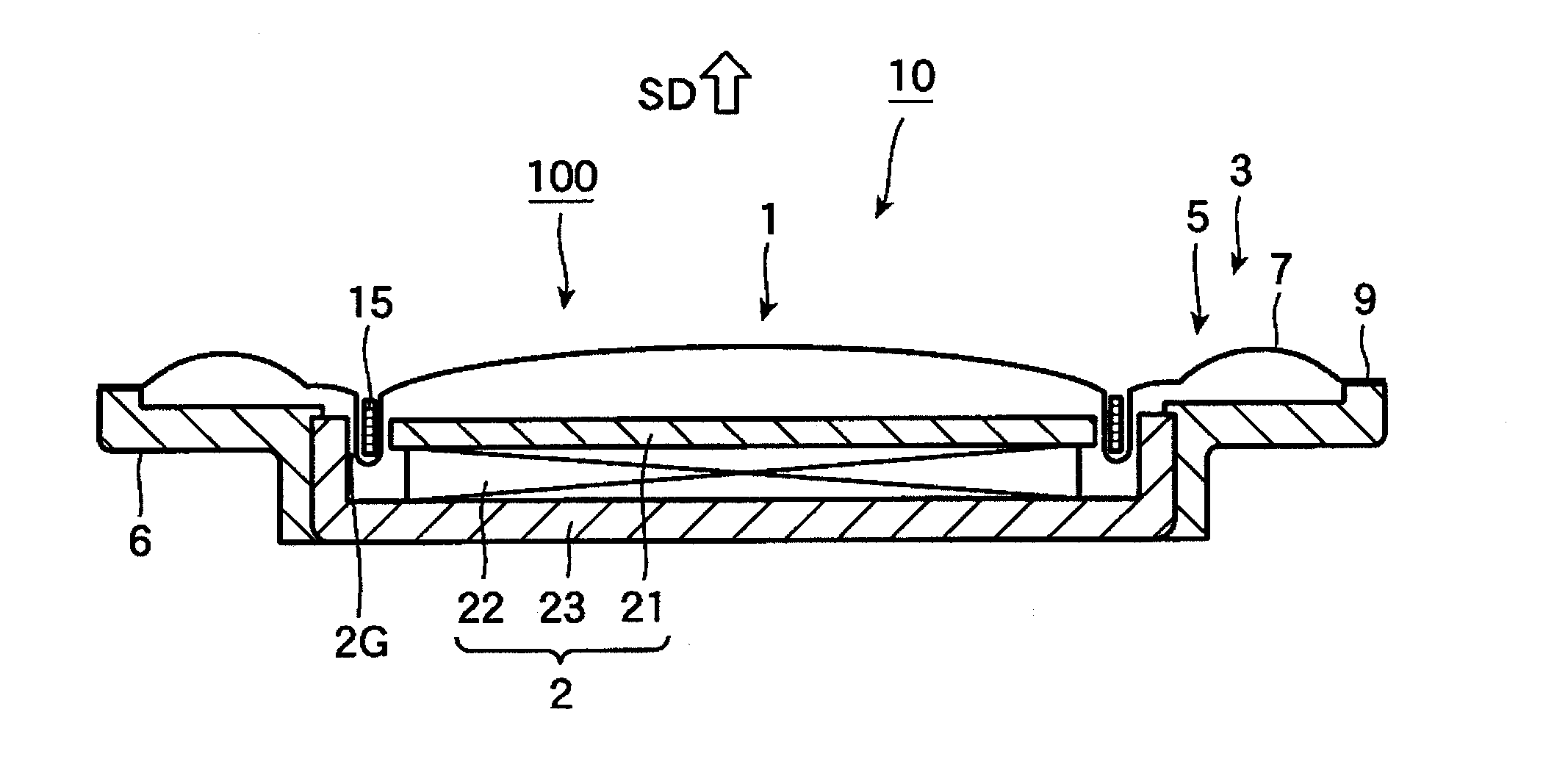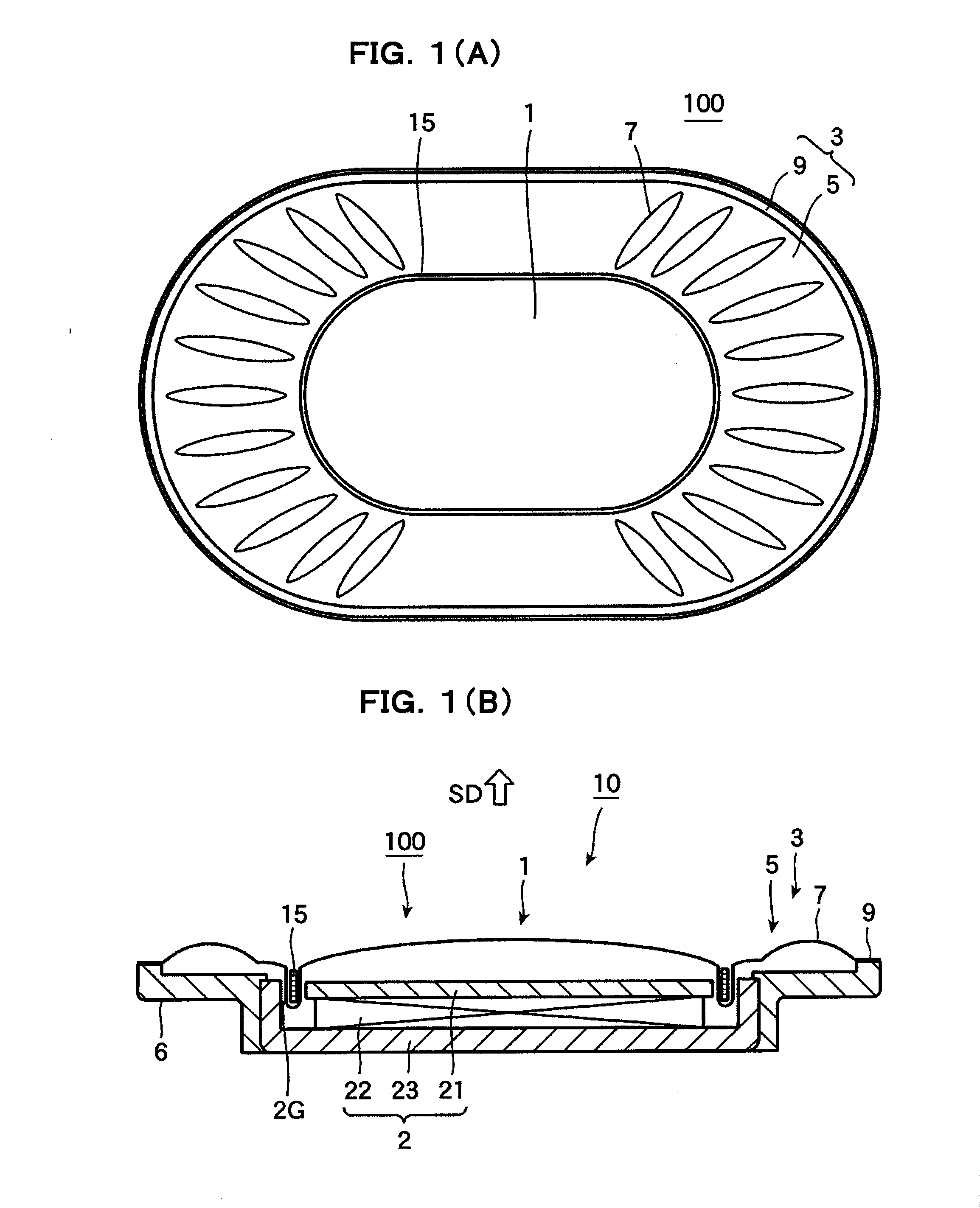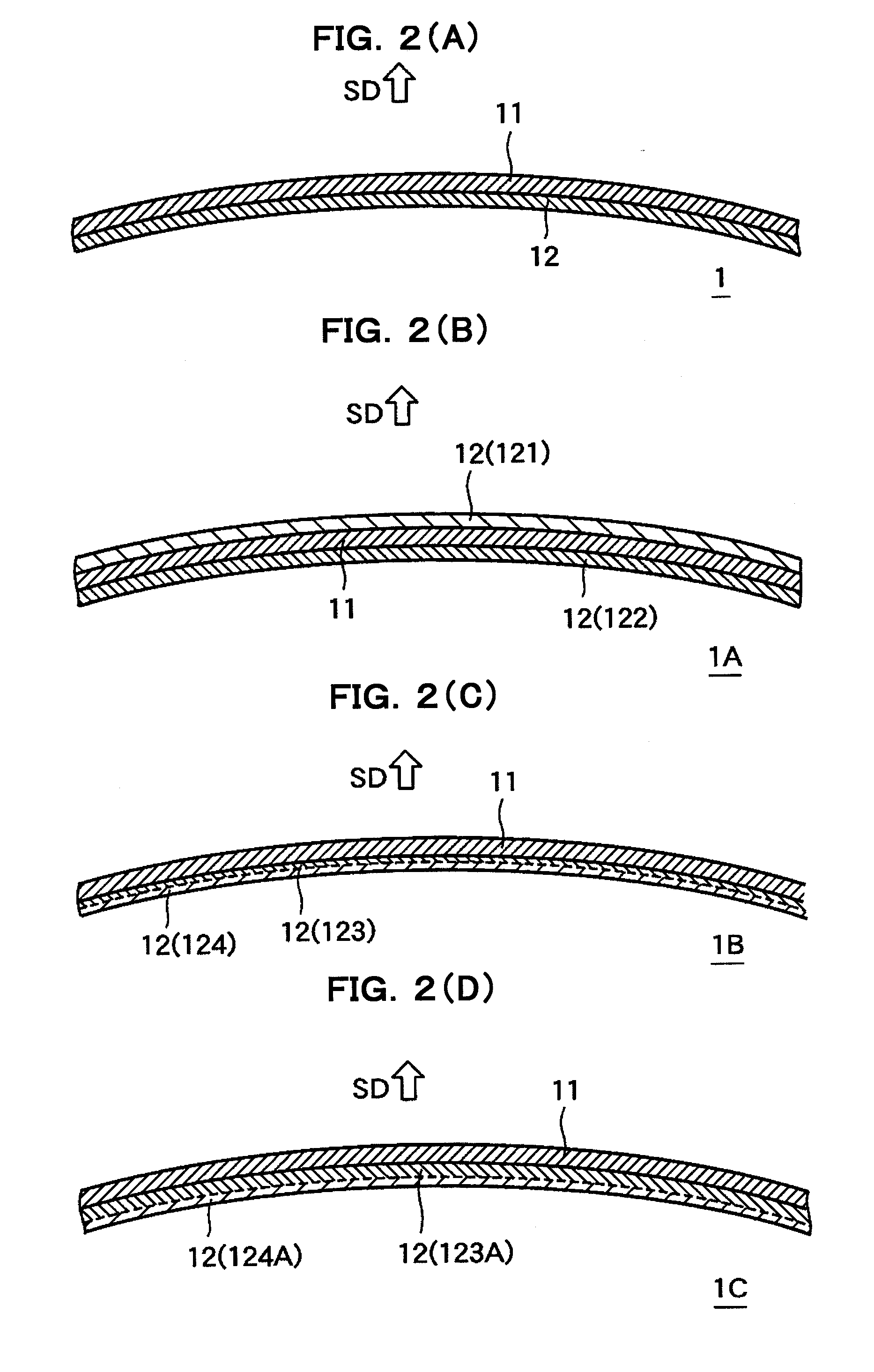Acoustic converter diaphragm, and acoustic converter
a technology of diaphragm and acoustic converter, which is applied in the direction of transducer diaphragm, electromechanical transducer, instruments, etc., can solve the problems of deterioration of formability of the rib, so as to achieve the effect of deterioration of the acoustic quality
- Summary
- Abstract
- Description
- Claims
- Application Information
AI Technical Summary
Benefits of technology
Problems solved by technology
Method used
Image
Examples
first embodiment
[0061]The base 11 is formed with a material of low Young's modulus, for example preferably Young's modulus of 2.499 GPA or less. The base 11 according to this embodiment employs a material with Young's modulus of around 2.35 GPa.
[0062]This base 11 is formed in a film shape with film thickness of around 6 μm to around 1000 μm. Preferably, the film thickness of the base 11 is around 6 μm to 150 μm.
[0063]Further, when employing, for example a material composed mostly of polyphenylsulphon (PPSU) resin with Young's modulus of around 2.35 GPa as the base 11, the film thickness is preferably around 7 μm to 19 μm.
[0064]The film thickness is not limited to those described above, which may be properly adjusted along with the film thickness of the base 11, damping layer 12 and diaphragm 1, and acoustic characteristic.
[0065]Further, conventional materials such as aromatic-system resin, polysulphone resin, polybiphenylsulphone resin, etc. may be employed as formation material of the base 11. Fur...
second embodiment
[0096]The second embodiment is substantially the same as the embodiment 1 except materials used for the base 11 and the method of forming the damping layer, and therefore the description relating to substantially the same as the embodiment 1 is omitted.
[0097]The base 11 used in this embodiment is configured mainly with a polyester-system elastomer. Further, the base 11 may be formed with a mixture of a polyester-system elastomer and a known thermoplastic resin, etc.
[0098]The polyester-system elastomer may employ a polyester-polyether type elastomer having a hard segment of aromatic polyester and a soft segment of aliphatic polyether, and a polyester-polyester type elastomer having a hard segment of aromatic polyester and a soft segment of aliphatic polyester. For example, Hytrel, etc. made by Toray-DuPont is listed as a product of the polyester elastomer.
[0099]Young's modulus (storage elastic modulus) of the base 11 used for this embodiment is 2.499 GPa or less, for example 0.115 GP...
PUM
 Login to View More
Login to View More Abstract
Description
Claims
Application Information
 Login to View More
Login to View More - R&D
- Intellectual Property
- Life Sciences
- Materials
- Tech Scout
- Unparalleled Data Quality
- Higher Quality Content
- 60% Fewer Hallucinations
Browse by: Latest US Patents, China's latest patents, Technical Efficacy Thesaurus, Application Domain, Technology Topic, Popular Technical Reports.
© 2025 PatSnap. All rights reserved.Legal|Privacy policy|Modern Slavery Act Transparency Statement|Sitemap|About US| Contact US: help@patsnap.com



